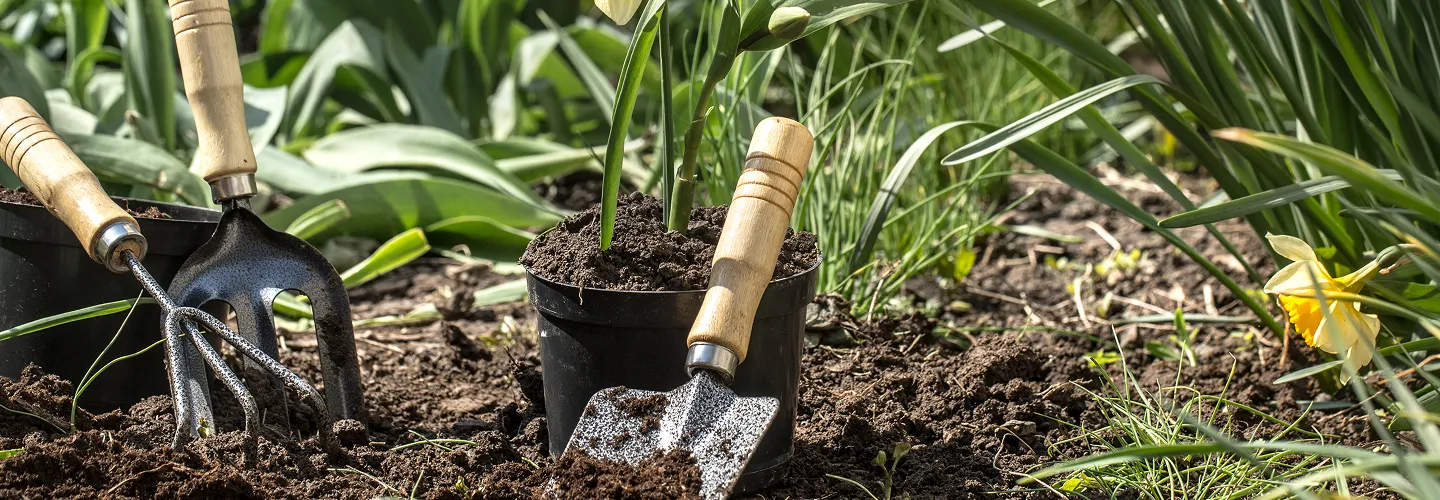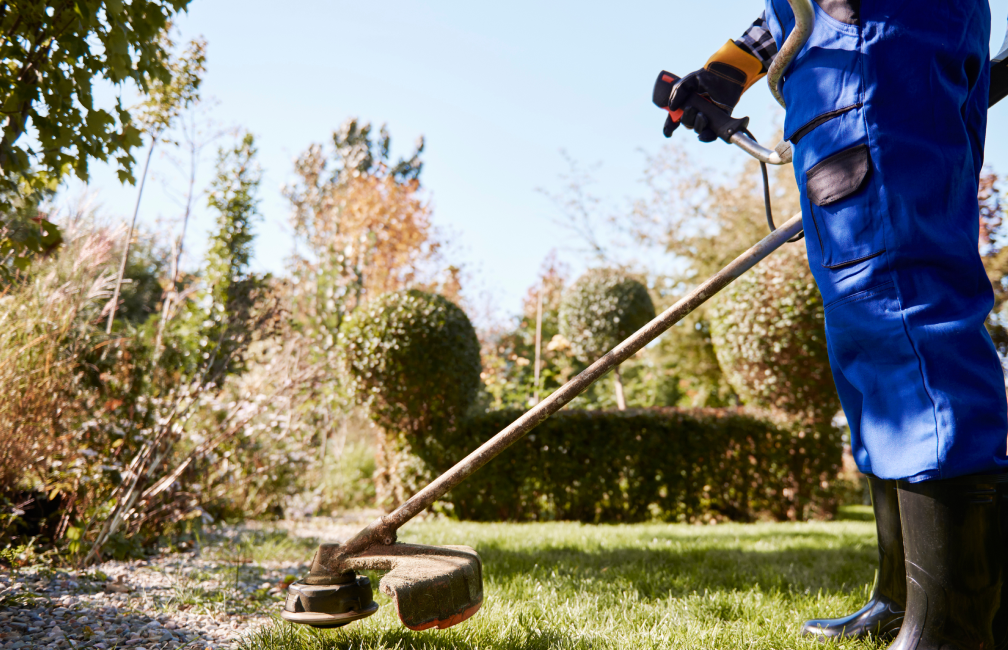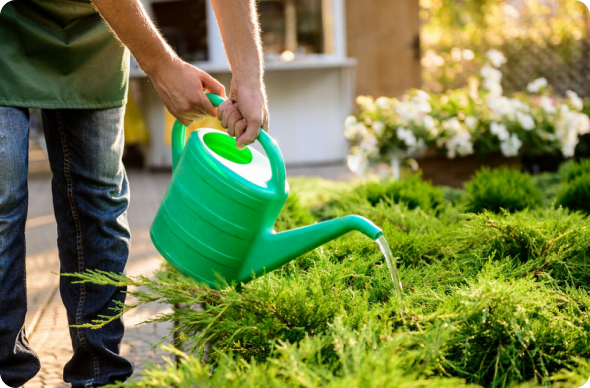
Hull Lawn Aeration Services
Choose our expert lawn aeration services to boost root growth, improve soil health, and achieve a greener, thicker lawn that stands out all season long.
Get a Free QuoteWhen to Schedule Lawn Aeration in Hull, MA – Seasonal Guide
In Hull, MA, the best times to schedule lawn aeration are typically in early spring or early fall, when grass is actively growing and can recover quickly. Hull’s coastal climate, with its cool ocean breezes and variable humidity, means lawns in neighborhoods like Nantasket Beach and Allerton Hill often face unique challenges. Aerating during these optimal windows helps your lawn withstand the effects of summer drought and winter frost, both of which are common in our area.
Local factors such as the sandy soils near the bay, shade from mature trees in areas like Sunset Point, and the risk of salt exposure from Nor’easters all play a role in determining the right timing for aeration. It’s also important to consider Hull’s municipal guidelines, which can be found on the Town of Hull website, to ensure your lawn care practices align with local recommendations.
Local Factors to Consider for Lawn Aeration in Hull
- Tree density and shade coverage, especially in older neighborhoods
- Soil type (sandy near the coast, denser inland)
- Recent precipitation and risk of drought
- Frost dates and seasonal temperature swings
- Terrain slope and drainage patterns
- Municipal restrictions or recommendations
Benefits of Lawn Aeration in Hull

Improved Soil Health
Enhanced Grass Growth
Better Water Absorption
Reduced Soil Compaction
Increased Lawn Resilience
Professional Local Service

Hull Lawn Aeration Types
Core Aeration
Spike Aeration
Liquid Aeration
Slicing Aeration
Manual Aeration
Aeration with Overseeding
Machine Aeration
Our Lawn Aeration Process
Site Evaluation
Preparation
Core Aeration
Cleanup
Post-Aeration Review
Why Choose Hull Landscape Services

Hull Homeowners Trust Us
Expert Lawn Maintenance
Reliable Scheduling
Competitive Pricing
Professional Team
Satisfaction Guarantee
Personalized Service
Contact Hull's Department of Public Works for Soil Core Disposal & Aeration Debris Management
Proper management of soil cores following aeration represents a critical component of responsible lawn care in Hull, Massachusetts. The town's Department of Public Works maintains specific protocols for organic yard waste disposal that directly impact homeowners managing post-aeration debris. Understanding these municipal requirements ensures environmental compliance while supporting sustainable soil management practices throughout this Norfolk County coastal peninsula community.
Hull Department of Public Works
253 Atlantic Avenue, Hull, MA 02045
Phone: (781) 925-2000
Official Website: Department of Public Works
The department recommends allowing soil cores to decompose naturally on lawn surfaces, as this practice returns valuable organic matter and nutrients directly to the soil ecosystem. When collection becomes necessary due to excessive core volume, property owners must utilize biodegradable paper bags exclusively, avoiding plastic containers that violate Massachusetts General Law Chapter 111, Section 150A. Collected materials should be transported to designated transfer stations or included in municipal yard waste collection programs, ensuring proper composting and environmental protection.
This approach proves particularly beneficial for Hull's nutrient-poor coastal soils that face constant challenges from salt spray exposure, wind stress, and sandy conditions requiring organic matter supplementation to maintain soil structure and support healthy turf growth in the demanding oceanfront environment.
Understanding Soil Compaction in Hull's Coastal Barrier Beach and Dune Deposits
Hull's unique geological foundation consists primarily of coastal barrier beach deposits, dune systems, and marine sands characteristic of this narrow peninsula extending into Boston Harbor and Massachusetts Bay, creating distinct soil management challenges throughout this southeastern Massachusetts coastal community. According to USDA Web Soil Survey data, predominant soil series include Beaches and Dune land complexes, Udipsamments (coastal sands), Windsor and Hinckley loamy sands on relict terraces, and Charlton-Hollis-Chatfield complexes where bedrock approaches the surface on Telegraph Hill and Allerton Hill. Urban land complexes dominate developed areas due to extensive fill operations and coastal modifications.
The coastal barrier deposits drain rapidly but develop surface crusting and compaction layers that restrict water infiltration and oxygen exchange, particularly problematic during summer drought periods when salt spray concentrates at the surface. Unlike inland clay soils that compact through particle adhesion, Hull's sandy soils compact when particles settle tightly together under traffic, reducing essential pore space for air and water movement. The peninsula's extreme exposure to coastal winds, storm events, and constant salt spray creates additional challenges through surface crusting, organic matter degradation, and salt accumulation that breaks down soil aggregation.
University of Massachusetts Extension Center for Agriculture, Food and the Environment
161 Holdsworth Way, Amherst, MA 01003
Phone: (413) 545-2766
Official Website: University of Massachusetts Extension
These conditions manifest as standing water in depressions despite proximity to the ocean, extreme soil resistance to garden tool penetration where salt has concentrated, severe thinning of grass coverage during winter salt exposure periods, and extensive moss growth in areas where salt accumulation has created anaerobic conditions. Professional aeration becomes essential when standard maintenance practices fail to address these extreme coastal soil challenges, with most properties requiring annual fall treatment using specialized equipment capable of penetrating salt-affected compacted layers.
Hull Conservation Commission Guidelines for Core Aeration Near Protected Coastal Wetlands
Environmental protection requirements significantly influence lawn aeration activities throughout Hull, particularly near Boston Harbor, Hull Bay, Hingham Bay, Weir River estuary, Straits Pond, and extensive salt marsh systems that characterize this coastal peninsula. The Hull Conservation Commission enforces strict buffer zone regulations prohibiting mechanical soil disturbance within 100 feet of certified wetland boundaries and coastal bank areas, as mandated by the Massachusetts Wetlands Protection Act.
Hull Conservation Commission
253 Atlantic Avenue, Hull, MA 02045
Phone: (781) 925-2000
Official Website: Conservation Commission
Property owners planning aeration projects must obtain written approval when working within designated buffer zones or environmentally sensitive coastal areas. The commission requires detailed site plans showing wetland boundaries, coastal bank areas, proposed aeration locations, and comprehensive erosion control measures preventing soil displacement into protected marine waters. Timing restrictions apply during shorebird nesting seasons and fish spawning periods, typically limiting mechanical activities between March 15 and August 31 to protect sensitive coastal ecosystems and migratory bird populations that utilize Hull's position along the Atlantic flyway.
Special coordination becomes necessary near federally protected areas where Army Corps of Engineers jurisdiction may apply, particularly in areas subject to coastal flooding and storm surge. Environmental compliance requires collecting excess plugs upslope of resource areas, stabilizing disturbed areas immediately with salt-tolerant seed mixtures, and coordinating timing with tidal cycles and storm forecasting to prevent work during high-risk periods.
Hull's Implementation of Massachusetts Soil Health Regulations for Aeration Operations
Massachusetts soil health regulations establish comprehensive standards for mechanical soil management practices, including core aeration operations conducted throughout Hull's extreme coastal environment. These regulations require adherence to best management practices designed to protect marine water quality and prevent soil erosion during aeration activities, while supporting municipal environmental protection objectives in this community where soil management directly impacts both residential landscapes and sensitive coastal ecosystems.
Massachusetts Department of Environmental Protection
One Winter Street, Boston, MA 02108
Phone: (617) 292-5500
Official Website: Massachusetts Department of Environmental Protection
Massachusetts Department of Agricultural Resources
251 Causeway Street, Suite 500, Boston, MA 02114
Phone: (617) 626-1700
Official Website: Massachusetts Department of Agricultural Resources
Implementation focuses on timing restrictions, equipment specifications, and post-aeration stabilization requirements ensuring environmental protection while supporting effective coastal soil management. Aeration operations must avoid frozen or saturated soil conditions, use equipment designed for salt-affected soils, and follow up immediately with salt-tolerant seed mixtures and organic amendments. The primary benefits include improved water infiltration through salt-crusted surface layers, enhanced leaching of accumulated salts from root zones, reduced surface compaction from pedestrian traffic on coastal paths, and support for salt-tolerant turf establishment in challenging oceanfront growing conditions.
Post-Aeration Stormwater Management in Compliance with Hull's MS4 Program
Hull's Municipal Separate Storm Sewer System (MS4) program establishes specific requirements for managing stormwater runoff following lawn aeration activities, particularly in densely developed coastal areas where soil disturbance could contribute to water quality degradation in Boston Harbor and regional marine ecosystems. The program aligns with federal Clean Water Act mandates while addressing local watershed protection priorities for marine water quality and coastal habitat protection.
U.S. Environmental Protection Agency, Region 1
5 Post Office Square, Boston, MA 02109
Phone: (617) 918-1111
Official Website: U.S. Environmental Protection Agency, Region 1
Post-aeration stormwater management requires immediate stabilization of disturbed soil surfaces through salt-tolerant overseeding, organic mulching, or temporary erosion control measures specifically designed for coastal environments. Property owners must prevent soil particles from entering storm drainage systems during the critical establishment period following aeration, particularly important on this narrow peninsula where runoff directly impacts marine waters and shellfish beds within Boston Harbor. The EPA NPDES permit system governs municipal compliance while providing enforcement mechanisms for addressing violations.
Weather monitoring becomes essential, with contractors postponing operations during predicted storm events or high wind conditions using National Weather Service Boston marine forecasting data. Best practices include scheduling work around weather and tidal forecasts, sweeping all hard surfaces clean to prevent salt-laden soil from entering storm drains, and stabilizing slopes immediately with coconut fiber erosion control blankets and salt-tolerant seed mixtures.
What Neighborhoods Do We Serve Throughout Hull, MA?
Our comprehensive understanding extends throughout Hull's diverse coastal neighborhoods, each presenting unique soil management challenges requiring specialized local knowledge based on marine exposure and peninsula geography.
Hull Village & Nantasket Beach Corridor: Centered around the historic village center and the famous Nantasket Beach, this area features properties with coastal barrier sands and dune deposits, complicated by centuries of coastal development and extreme salt spray exposure. Properties near the beach experience severe compaction from pedestrian traffic and parking combined with constant salt accumulation, requiring annual deep-core aeration with specialized salt-resistant equipment and immediate follow-up with salt-tolerant seed mixtures designed for harsh coastal conditions.
Pemberton Point & Telegraph Hill Historic Districts: These elevated areas feature properties with mixed glacial till and urban fill materials over bedrock, offering some protection from direct salt spray but subject to extreme wind exposure and coastal storm impacts. Properties on Telegraph Hill experience moderate compaction from residential activities but benefit from better drainage on elevated terrain, requiring annual fall aeration focusing on improving water infiltration and incorporating organic matter to counteract wind desiccation and periodic salt exposure during major storm events.
Allerton Hill & Windmill Point Waterfront Areas: Located along Hingham Bay shores, these residential areas encompass properties with marine sands and engineered fill materials, featuring direct exposure to tidal influences and storm surge. Properties require specialized aeration techniques that address both salt accumulation and periodic inundation, with emphasis on improving subsurface drainage and salt leaching while maintaining erosion control to protect coastal banks and adjacent marine waters.
Kenberma & Atlantic Hill Residential Districts: These mid-peninsula neighborhoods feature properties with coastal sands and urban land complexes, characterized by moderate coastal exposure and established residential development patterns. Properties often experience surface crusting from salt spray combined with compaction from residential activities, requiring biennial aeration with emphasis on organic matter incorporation and pH management to counteract salt accumulation while supporting established landscape features.
Straits Pond & Weir River Estuary Vicinity: Properties adjacent to these important coastal water bodies feature hydric soils and salt marsh transitions with extreme environmental sensitivity. Aeration in buffer zones requires strict conservation commission approval and specialized techniques focusing on improving drainage while preventing any soil displacement toward sensitive estuarine ecosystems that support critical fish and wildlife habitat within the Boston Harbor system.
Hull Shore Drive & Oceanfront Properties: These properties face the most extreme coastal conditions with direct Atlantic Ocean and Massachusetts Bay exposure, constant salt spray, and severe wind stress. Specialized aeration approaches focus on salt leaching, surface crust penetration, and establishing resilient turf using salt-tolerant species, often requiring multiple annual treatments with specialized equipment and comprehensive organic matter programs to maintain vegetation in these challenging oceanfront conditions.
Hull Municipal Bylaws for Core Aeration Equipment Operation & Noise Control
Municipal noise ordinances significantly impact lawn aeration service scheduling throughout Hull, with specific regulations governing equipment operation hours and sound level limitations in residential areas. Town bylaws typically restrict mechanical lawn care activities to weekday hours between 7:00 AM and 6:00 PM, with weekend operations limited to 8:00 AM through 5:00 PM to minimize neighborhood disturbances in this densely populated coastal community where sound travels across water and residential proximity requires careful consideration of noise impacts.
Hull Building Department
253 Atlantic Avenue, Hull, MA 02045
Phone: (781) 925-2000
Official Website: Building Department
Hull Board of Health
253 Atlantic Avenue, Hull, MA 02045
Phone: (781) 925-2000
Official Website: Board of Health
Equipment specifications require compliance with EPA emission standards and Massachusetts noise pollution regulations, particularly near schools, healthcare facilities, and dense residential areas throughout this compact peninsula community. Professional contractors must maintain current licensing and insurance documentation while demonstrating competency in local regulatory requirements governing coastal soil management activities. Best practices include scheduling fall aeration as optimal timing while avoiding major storm seasons, coordinating with tidal schedules and weather forecasts to ensure safe access and working conditions, using specialized salt-resistant equipment and immediate post-treatment with salt-tolerant seed mixtures, providing comprehensive erosion control on slopes above coastal waters, and timing operations to avoid peak summer recreational periods when beach traffic and tourism activities are most intensive throughout the peninsula.